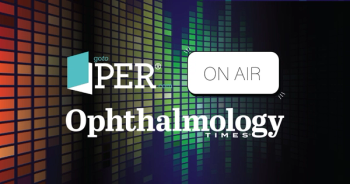
EyeCon 2025: Oluwatosin U. Smith, MD, previews a program of collaborative care and practical learning
Extend the summer at EyeCon 2025—where clinical insight meets coastal vibes—September 26 and 27 at the Margaritaville Hollywood Beach Resort in Florida.
Educational committee member Oluwatosin U. Smith, MD, highlights the 2025 Ophthalmology Times EyeCon® and Optometry Times EyeCon® conference, a multispecialty meeting for ophthalmologists and optometrists, highlighting program updates, collaborative learning opportunities, and evolving approaches in patient care.
To learn more about or to register for EyeCon 2025,
Here’s one way to carry the summertime vibe into the fall: The 2025 Ophthalmology Times EyeCon® and Optometry Times EyeCon® conference is set for September 26 and 27 at the Margaritaville Hollywood Beach Resort in Florida. Oluwatosin U. Smith, MD, of Glaucoma Associates of Texas in Dallas, is a member of this year’s EyeCon educational committee, which also includes Joseph Allen, OD, FAAO, Dipl ABO; Sruthi Arepalli, MD; and Jade Coats, OD, FAAO. Together, they’ve crafted a program designed to foster dynamic, cross-disciplinary discussion between ophthalmologists and optometrists.
This year’s agenda covers a wide range of topics, offering key insights into the latest diagnostic strategies and clinical trial data across specialties. Additionally, this year’s format represents a shift from past meetings, with the introduction of an educational committee, rather than individual chairs, overseeing the structure and direction of sessions.
Smith, who will help lead a glaucoma session, recently sat down with the Eye Care Network to share a sample of what attendees can expect. She noted that it has been just over a decade since the first minimally invasive glaucoma surgery (MIGS) procedures, such as the iStent, were introduced around 2012, marking an important milestone in the field. She added, “We’ve come full circle, sort of learning all the different MIGS procedures that have come out, and then we’re at the place now where we’re trying to look at each procedure and its long-term effects in reducing IOP and preserving vision.”
The session will highlight phase 3 clinical trials that demonstrate the benefits of MIGS and explore broader shifts in glaucoma management. One key example is the LiGHT trial, which provided evidence for early intervention strategies.1,2
Communication is everything
Smith emphasized the importance of both timely care and communication between specialists across a patient’s care journey. “Glaucoma patients have disease for the long term. They sometimes see different specialists over their lifetime. One of the things I always say works well for any patient that has a chronic disease is communication, making sure we get records or we exchange records as new things occur.”
Looking ahead, Smith sees the field moving toward earlier, less-invasive treatment options and greater collaboration in co-management. “There is a big burden of glaucoma. We are well aware of that, and that over time that burden will only increase. With that going on then the burden to take care of these patients is there, and for us to do a better job taking care of patients and not referring them later on in their disease, but early on when we can push back some of the more invasive interventions that we have available like trabeculectomies and tube shunts.”
The EyeCon meeting will feature what Smith calls structured “program pods” to foster focused discussion, as well as a collaborative environment where ophthalmologists and optometrists can address shared challenges in patient care. The exhibit hall will also provide opportunities to engage with industry partners and learn about new technologies.
Sun and fun while learning
Smith noted that the venue itself encourages balance: “Fun location. You can bring your family along with you. You spend portions of the day learning, and then you’re able to spend time doing things that are more social in that environment, spending time on the beach.”
Most importantly, she stressed that the educational committee’s goal is for attendees to leave with practical insights they can implement immediately. “One thing we always like to say as the educational committee is to make sure we provide substance that allows people to go home and come Monday morning when they show up at their offices, there are certain things they’ve learned at the meeting that they can use on day 1.”
References
Smith O, Stevenson S, Hayes H. ASCRS 2025: Oluwatosin U. Smith, MD, champions early intervention and innovative glaucoma technologies. Ophthalmology Times. April 25, 2025. Accessed August 18, 2025.
https://www.ophthalmologytimes.com/view/ascrs-2025-oluwatosin-u-smith-md-champions-early-intervention-and-innovative-glaucoma-technologies Charters L. AAO 2024: LiGHT trial shows SLT outperforms medications in reducing glaucoma progression over 6 years. Ophthalmology Times. October 20, 2024. Accessed August 18, 2025.
https://www.ophthalmologytimes.com/view/aao-2024-light-trial-shows-slt-outperforms-medications-in-reducing-glaucoma-progression-over-6-years
Newsletter
Don’t miss out—get Ophthalmology Times updates on the latest clinical advancements and expert interviews, straight to your inbox.








































